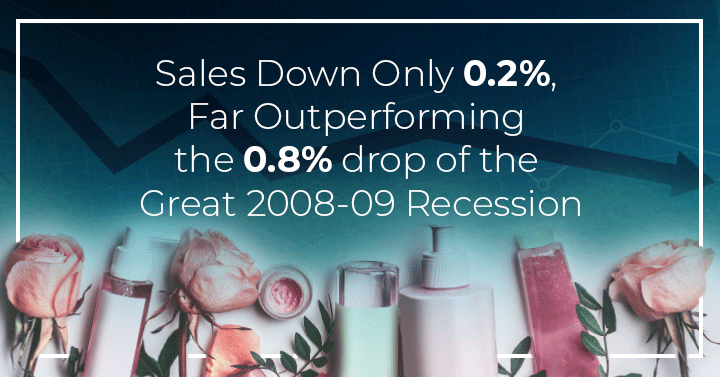
Will the Global Brightstock Market Recover After the Shock of 2020?
The global basestock market felt a colossal impact on demand and supply as a result of the COVID-19 outbreak, and brightstocks were no different. Per Kline’s analysis, the brightstock demand declined by approximately 7.5% in 2020 compared to the demand registered in 2019. While the global market was impacted by demand shock during the initial period of COVID-19, the latter phase witnessed supply shock as well, since brightstock supply was in a deficit. This was a result of low basestock production, especially for Group I (including brightstocks), because of unfavorable refinery economics. Due to low fuel demand caused by pandemic-related restrictions, margins for fuel have declined considerably. As a result, refiners are not able to cash in on the current high margin regime for brightstocks, as their run rates are impacted due to constraints on the fuel side of operations.
Beauty Market Displays Amazing Resiliency in an Unprecedented Year
What could have been a dismal year for the U.S. beauty market in 2020 turned out just as we predicted. After analyzing 20 different product categories, five trade classes, and the performance of hundreds of brands, we have found that the overall beauty market declined by a mere 0.2% in 2020 to $77.8 billion, essentially flat with 2019 sales. Continue reading→
What Are the New Strategies to Mitigate Weed Resistance to Herbicides?
Weed resistance to herbicides is nothing new, but in the past 30 years, the number and spectrum of herbicide resistance have exploded and caused economic concern. In 1991, 120 weed biotypes resistant to triazine herbicides and 15 other herbicide families were documented throughout the world. Since then, nearly 500 unique cases of herbicide resistance have been reported. Some of the early herbicide resistance issues were mitigated through the development of corn and soybean crops resistant to the broad-spectrum herbicide glyphosate. However, repeated use of glyphosate over many years has led to widespread resistance of critical weeds to glyphosate. This has created a situation where farmers are concerned, and even panicked, by their inability to control weeds.
[NEW WEBINAR] Green Hydrogen Economy: Impact on the Finished Lubricants Market in Europe
Access this webinar to learn about:
Green Hydrogen market analysis:
– The breakthrough of the Green Hydrogen economy
– Description of the technology
– Some background information about EU carbon neutral targets, and financial support
– Hard-to-abate decarbonization end use
Indie Brands to Watch in the Natural Beauty Space
As the world first entered coronavirus-related shutdowns in March 2020, natural beauty brands were suddenly tasked with offering two important points of differentiation: authenticity and the ability to pivot.
While conventional brands indeed managed to navigate the pandemic, indies were often the first to react to it. They shifted marketing campaigns, becoming more consumer-focused, personalized, and willing to consider consumer feedback. As a result, consumers gravitated toward these authentic and relatable companies, as shown in our recently published Natural and Clean Beauty Global Series Report. Independent beauty brands became an even stronger driving force behind the growth of the natural and clean beauty market in the United States, advancing more than 30% collectively, compared to a near flat growth for conventional brands. Continue reading→
Beauty Tech: Back to Basics
The market for beauty devices is poised for another year of growth, with expected increases of mid-single digits in the United States and an even stronger double-digit rate in China. And while last year’s category gains were undoubtedly driven by the COVID-19 pandemic, sustainable growth seems likely. To boost sales even further, marketers are expected to embrace the following key areas:Continue reading→
Radical Transformation on the Horizon for Sanofi
Earlier this month, Sanofi announced a new strategic vision for its Consumer Healthcare division. The new head of the division, Julie Van Ongevalle, shared that the company will focus on core brands and categories while pursuing first-in-class Rx-to-OTC switches in the ED and flu categories in the United States. Key components to future growth of Sanofi’s OTC business in the United States are novel Rx-to-OTC switches. The company is entrenched in its work to develop nonprescription versions of Cialis for erectile dysfunction and Tamiflu influenza medication in the States. As of December 2020, Sanofi has more than 16 clinical studies either complete or underway to support applications for OTC marketing of these two medications. Actual–use trials to understand how consumers behave and interact with these medicines will be key factors in the success of the switches. These brands have the potential to be blockbusters, as there are currently no medications for either condition available without a prescription in the United States. Detailed analyses of both of these medications and the likelihood and timing of approval and sales forecasts are included in Kline’s Rx-to-OTC Switch Forecasts study. Continue reading→
China Winning in the Global Beauty Market; Indies Help Propel the Market
As much of the world continues to grapple with the effects of the COVID-19 pandemic, China has managed to quickly bounce back to a growth trajectory.
By the end of 2020, spending on fast-moving consumer goods in the region recovered spectacularly, with the second half of the year fully offsetting the negative impacts that COVID-19 had in the early months of 2020. China often counterbalanced record low annual results for multinational cosmetics groups. L’Oréal, for example, reported a sales rise in Asia of +1.5% for 2020, compared with declines of 9.2% and 8.8% in Western Europe and North America, respectively. Estimated at $55B in 2020 at the retail level and on a steady growth path, the Chinese beauty market continues to be highly attractive. Continue reading→
Five Black-Owned Beauty Brands to Watch
As Kline continues to celebrate the many achievements of the Black community in the beauty space, we’re highlighting five game-changing brands and their creators.Continue reading→










